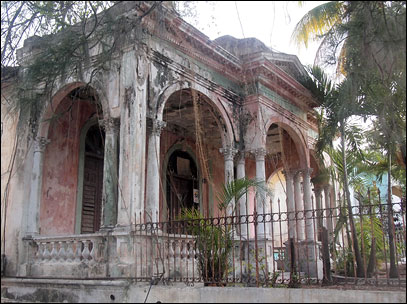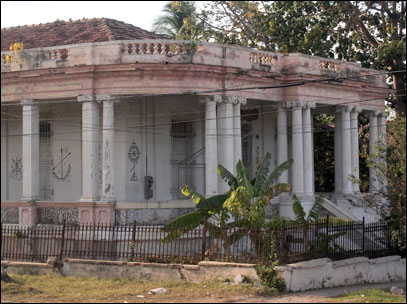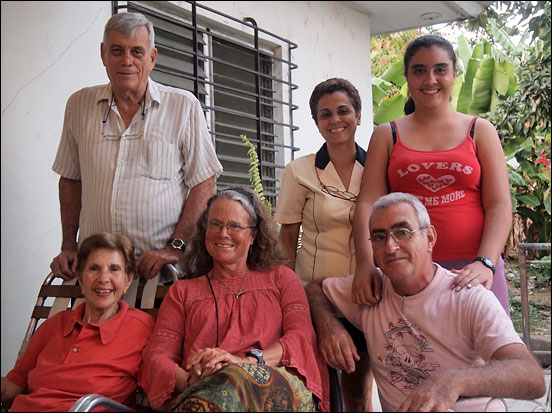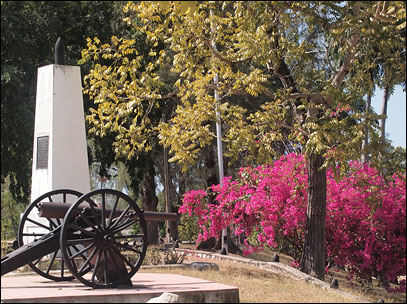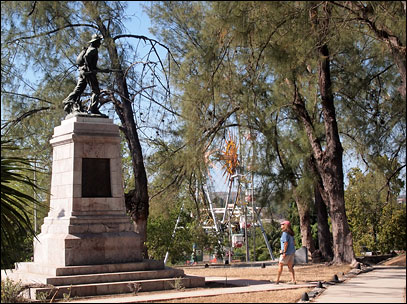 |
|
About this trip (home page) Cuba journal (9) More about Cuba Mexico |
|
On the left is Cayo Granma. On the right is a photo of a little boy that we took on the island twelve years ago. It was published in our book. On the island this time, we showed the photo to some local folks, and they were trying to figure out who the boy was. (It is a boy.) Quite a little crowd gathered, passing the book around, discussing the photo in rapid-fire Cuban Spanish — so of course we didn't understand a word. It would have been fun to see the subject of the photo today, more grown up, but in the end, no-one was sure who the little boy was. The ride back to our casa was a bit difficult. We decided to follow the "carretera turistica," the tourist road, which we knew was only a figment of some bureaucrat's imagination two or three decades ago. It was worse now than it was when we did it eleven or twelve years back, when researching the book! Some of the "tourist route" is nearly unpaved, it runs by a huge concrete plant and other eyesores, and it turns into a confusing tangle of working class suburbs. We were lost, or nearly lost, much of the time, but we did finally make it back to familiar territory. Garzon, one of the main avenues, was closed for Sunday night revelry — makeshift sidewalk restaurants and cafe's and vendadores of all sorts lined the street, and crowds of people were out for the evening — so we lived large and bought a couple of bags of fresh popcorn to bring back to our casa. Last of the big Norteamericano spenders.
Tomorrow we deal with the bureaucracy because we must extend our visas.
February 13, Santiago de Cuba, afternoon
As things turned out, we waited in line for a while at a downtown bank to buy the tax stamps; then we had to go to two different offices to get our health insurance, and the second office was difficult to find. Next we cycled to the opposite side of the city for the immigration office, and after waiting for a while there, we learned that we were supposed to be at a different office, all the way across town again. Lonely Planet, by the way, had the procedure and addresses screwed up at a couple of critical points, which was part of the reason we chased around so much. We also found the Viazul bus terminal and bought tickets for tomorrow to Holguin. We never waited more than a half-hour anywhere, and the whole process, including the rides all around around the city, took less than five hours. I think in Cuba that's considered pretty good. Wandering around Santiago de Cuba, we photographed some of the old mansions that are falling into genteel ruins. (The mansions that have been well preserved, here in Santiago de Cuba and also in Miramar, near Havana, are mostly owned by organizations or government agencies.)
February 14, Santiago de Cuba
When we'd been on the porch for just a half-hour or so, Rafael showed up, and soon after, Virginia. She was definitely the youngest and best-looking among us! Rafael is now teaching history. Not quite the work he is trained for (he is a psychologist) but surely more satisfying for him than renting cars for Gaviota. Virginia looked smart in her TRD Caribe uniform. (She is working in a dollar store. She has a degree in Philosophy, I seem to recall.) Their daughter Sabrina came with Rafael, and she is now 13. Their son, Marcos, stopped by for just a minute, and he is now slim and handsome, a senior in high school. Hebert is still a professor at the university. Ruby has been retired for a good many years now, but Hebert does not want to stop his research and teaching. Their two sons, one a mathematician and the other a biochemist, are both living in Spain now. There's a sad irony here. Years ago, it was Ruby who said that "This is our revolution, even with its problems, and we want to make it work," meaning that this was a family commitment, including her sons. I have no doubt that Ruby and Hebert are both sad that their sons, and their only grandchild, are no longer in Cuba. Still, their sons left legally and can return for visits occasionally, and do.
Oddly, I (Wally) had felt a little reluctant and shy about walking into these folks' lives again after so many years, but Barbara persisted, and we're both very glad that we saw everyone. It was wonderful! This morning, we walked around San Juan Hill, where Teddy Roosevelt and the Rough Riders co-opted Cuba's rebellion against Spain. The hill, now a beautiful memorial park, is only a block from Caridad's house.
Later this afternoon we are packing the bikes onto a bus and going to Holguin.
|
|
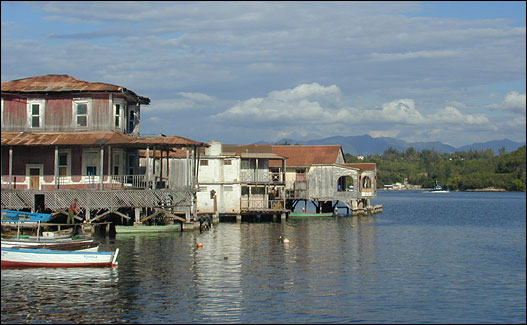

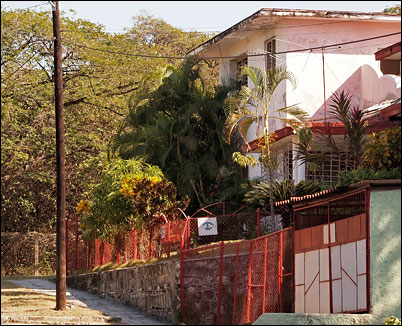 Before dinner in the evening, we had a little talk with Caridad, the owner of this house. We never would have dreamed that she is 84 years old. She and her late husband bought this house in 1952, and she would have been in her early 30's at the time of the revolution. What changes she must have seen! Not all for the good, from her point of view. But two of her children are now doctors, and she is surrounded by family — in half of this house, and next door as well. (Right, Caridad's house)
Before dinner in the evening, we had a little talk with Caridad, the owner of this house. We never would have dreamed that she is 84 years old. She and her late husband bought this house in 1952, and she would have been in her early 30's at the time of the revolution. What changes she must have seen! Not all for the good, from her point of view. But two of her children are now doctors, and she is surrounded by family — in half of this house, and next door as well. (Right, Caridad's house) 